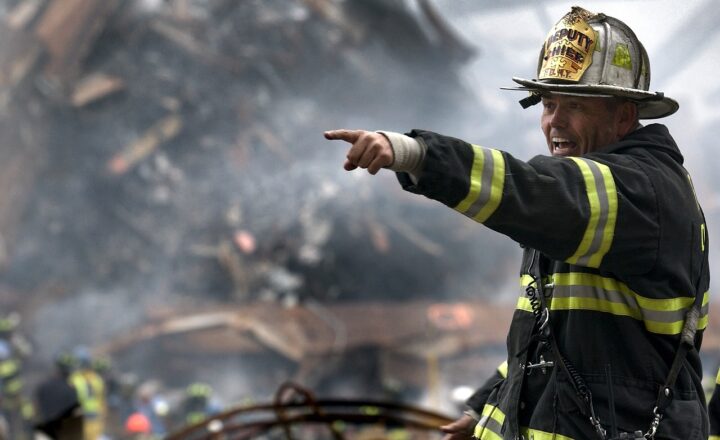The Difference Between Military and Civilian Emergency Services in Disaster Response
November 13, 2024

In times of disaster, the responses from military and civilian emergency services are critical to ensuring public safety and restoring order. Understanding the differences between these two types of emergency services can help clarify their unique roles, strengths, and operational methods. This article explores how military and civilian emergency services differ in disaster response, including their training, resources, command structure, and the types of disasters they typically handle.
1. Overview of Emergency Services
Emergency services encompass a broad array of organizations dedicated to responding to emergencies and disasters. These services can be grouped into two main categories: military and civilian, each with distinct operations and capabilities.
– Civilian Emergency Services: These include local fire departments, police, emergency medical services (EMS), and various volunteer organizations, such as the Red Cross. Civilian agencies are primarily responsible for day-to-day emergency response and community safety.
– Military Emergency Services: These consist of armed forces trained for disaster response, including the Army, Navy, Air Force, and Marines. Military units often provide support and resources during large scale disasters or national emergencies.
Each type of service plays an integral role in disaster response efforts, but they differ across various dimensions.
2. Command Structure and Coordination
The command structure for both military and civilian emergency services reflects their distinct operational frameworks.
– Civilian Command Structure: Civilian emergency services operate under local governance. Decisions are usually made by local government officials, with coordination conducted through models such as the Incident Command System (ICS). Local agencies usually take the lead in disaster response, supported by regional and federal agencies.
– Military Command Structure: The military operates under a strict hierarchical command structure, often dictated by the specific needs of the mission. When deployed for disaster response, military leaders make decisions based on pre-established protocols, which can be influenced by national security considerations. The military often integrates with civilian agencies under the National Response Framework (NRF) and can operate independently if necessary.
In times of a large-scale disaster, coordination between military and civilian services becomes critical. While civilian services often lead initial response efforts, the military can augment these efforts by providing additional resources and manpower when required.
3. Training and Resources
The training and resources available to military and civilian emergency services greatly shape their effectiveness in disaster response.
– Training: Civilian emergency service personnel undergo specialized training in emergency response, rescue operations, and community engagement. This training is often tailored to the specific needs of their locality and includes disaster preparedness drills and public education campaigns. Civilian responders focus on immediate community needs, emphasizing medical and rescue operations.
– Military Training: Military personnel receive rigorous training in combat and tactical operations, which can be adapted to disaster response scenarios. Their training emphasizes logistics, command operations, and large-scale mobilization, enabling them to handle extensive scenarios that require coordinated responses across multiple agencies. Military assets, including aircraft, ships, and armored vehicles, add considerable resources to disaster response operations.
The resources available to each type of service further illustrate their capabilities:
– Civilian agencies may deploy their resources—such as ambulances, fire engines, and local volunteer organizations—to respond effectively to community needs.
– Military units bring in heavy equipment, search and rescue operations, and logistics support, enabling them to operate in challenging conditions such as flooded areas or damaged infrastructure.
4. Types of Disasters Responded To
While both military and civilian emergency services can respond to a wide variety of disasters, their focus often differs based on available resources, expertise, and operational mandates.
– Civilian Emergency Services: These agencies typically address local emergencies such as:
– Fire outbreaks
– Traffic accidents
– Medical emergencies
– Natural disasters like floods and tornadoes
– Military Emergency Services: The military is often utilized for:
– Large-scale natural disasters (hurricanes, earthquakes)
– Flood rescue operations requiring heavy machinery
– Humanitarian relief missions in conflict zones
– National security emergencies, such as terrorist attacks or pandemics
In many cases, military and civilian agencies collaborate to respond to disasters, with civilian agencies engaging the public and providing immediate care, and military units mobilizing for larger-scale aid and logistical support.
5. Community Engagement and Outreach
Civilian emergency services typically maintain a closer relationship with their communities, which is critical during times of disaster. Awareness campaigns, safety programs, and collaborative drills with local organizations help build resilience and preparedness. Citizen involvement through training programs ensures that community members are ready to act during emergencies.
In contrast, military engagement with the community during disaster response can focus on swift operations without the same depth of community interaction. While the military may assist in recovery efforts and restore order, fostering a partnership with local communities is often primarily the duty of civilian organizations.
By understanding these unique strengths and challenges, communities can more effectively prepare for and respond to disasters, ensuring that both military and civilian resources are effectively utilized.
Conclusion
In conclusion, both military and civilian emergency services play invaluable roles in disaster response. While they operate under different command structures and training protocols, both agencies work tirelessly to protect communities and restore order after disasters. By recognizing the differences and establishing effective coordination, we can enhance our collective capacity to respond to emergencies and mitigate the impacts of disasters.
Understanding these distinctions is essential for policymakers, emergency managers, and communities aiming to improve disaster preparedness and response strategies.







